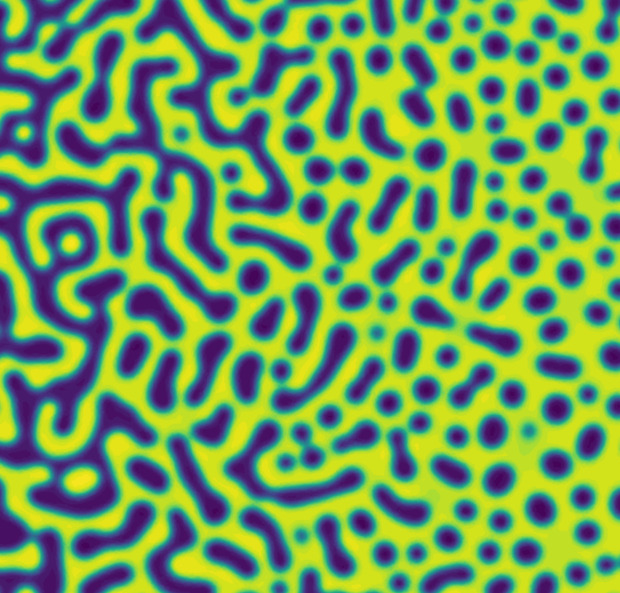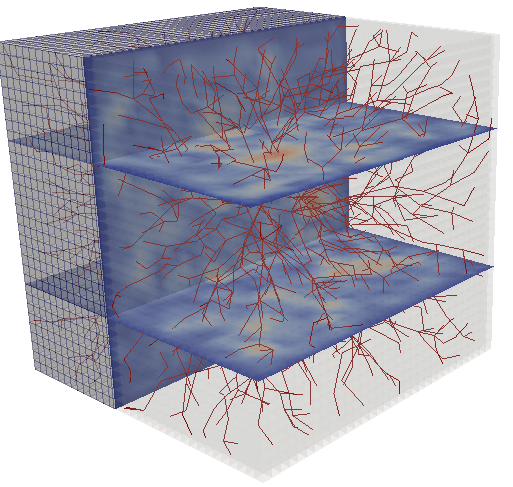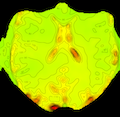Quantitative Biomedicine deals with the modeling, analysis, simulation, or optimization of complex systems in clinical and biological applications. These topics concern the understanding of cellular, biochemical, and biomolecular processes, as well as the solution of relevant problems in medical engineering. In this area, interdisciplinary contributions to the fields of medical imaging and clinical diagnostics are enormously important.
One major research topic at WIAS is the physics-based modeling of medical images. This includes the development of mathematical methods for classical tasks of image processing like registration, denoising, equalization, and segmentation, but also (low-rank - sparse) data decomposition and functional correlations, e.g., in neurological processes, as well as data assimilation problems for integrating available images into physical models. These processes typically lead to complex, nonlinear, or nonsmooth inverse problems where both analysis, optimization and statistics play a central part.
Further research concentrates on the development, the analysis, and the simulation of mathematical models for a better understanding of biological flows and biological tissues. Current topics include the modeling of blood flows in the cardiovascular system, the development of multiscale methods for the simulation of vascularized tissues and biomaterials.
*) S. Katz, A. Caiazzo, B. Moreau, U. Wilbrandt, J. Brüning, L. Goubergrits, V. John, Impact of turbulence modeling on the simulation of blood flow in aortic coarctation, International Journal of Numerical Methods in Biomedical Engineering, 39 (2023), pp. e3695/1--e3695/36, DOI 10.1002/cnm.3695

Phase field models for complex materials and interfaces
This research topic focusses on modeling complex material systems with different phases including multiphase and interfacial flows, damage and fatigue modeling, topology optimization and complex materials. Physical phenomena modelled involve fluid flow, diffuse transport and (visco)elastic deformation in the context of phase separation and phase transitions. Applications range from biology to physics and engineering.

Modeling, Simulation and Optimization for Biomedical Applications
Mathematical models and computational techniques are nowadays utilized in medical sciences for noninvasive diagnostic, diseases characterization, therapy planning, and treatment monitoring. The research at WIAS focuses on efficient and robust models for biological tissues and fluids, on the usage of advanced mathematical models in data assimilation and medical imaging applications, as well as on techniques in optimization, machine learning, and optimal control for decision support in biomedicine.

Medical imaging and neuroscientific applications
Image processing tools based on mathematical algorithms from statistics or variational methods enable a bulk of applications in the medical sciences. They range from image enhancement to automatic image analysis. In many cases, a significant improvement in the results results of image analysis can be achieved by integrating the physics of the imaging process. Applications of these methods range from tomography images to various modalities of magnetic resonance imaging.


